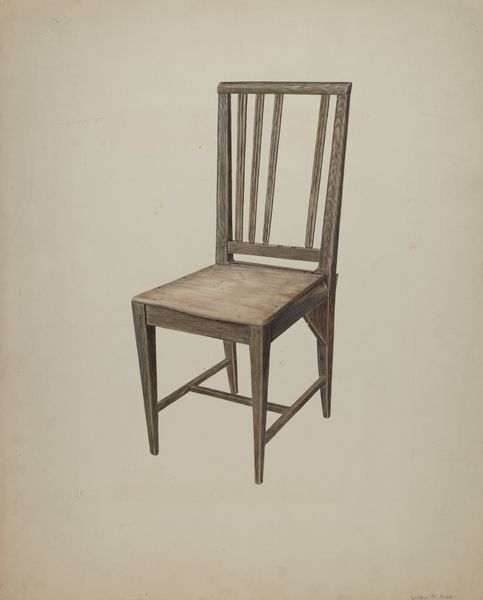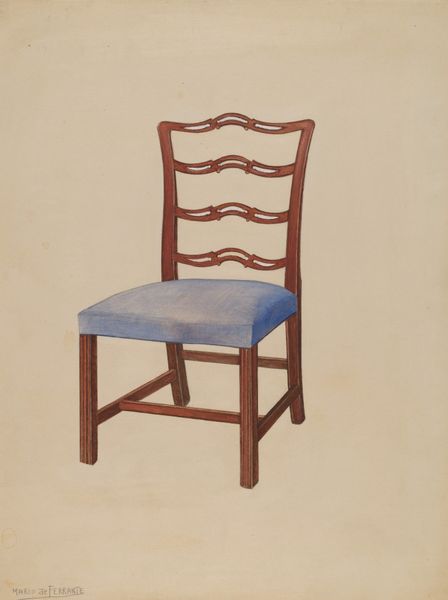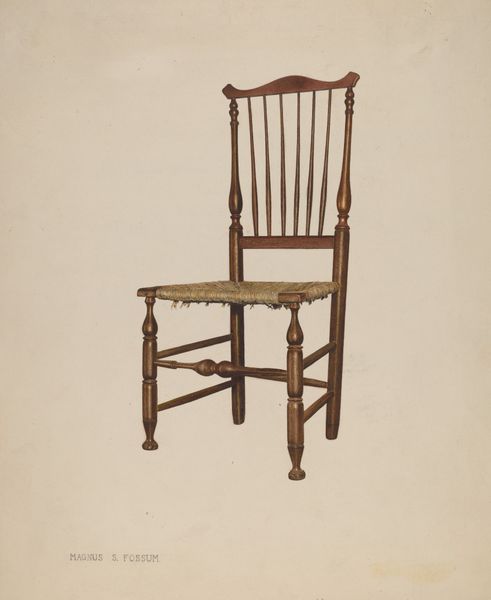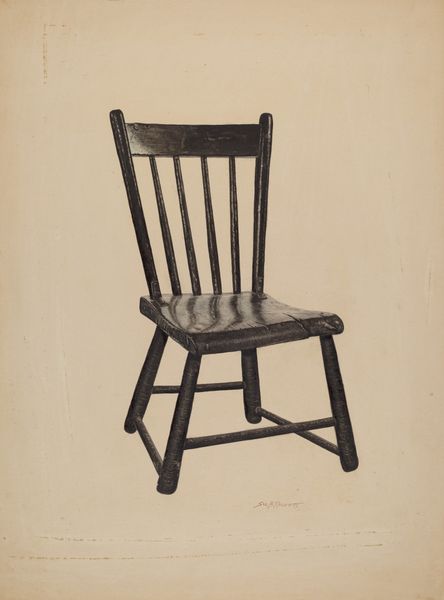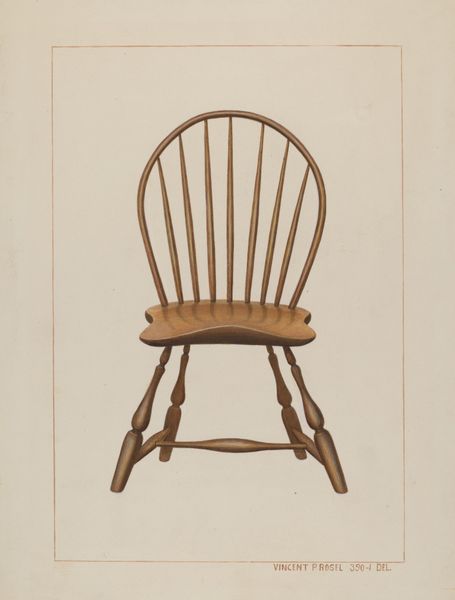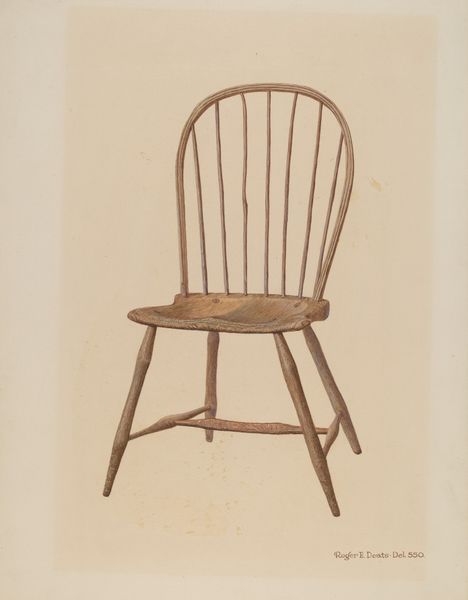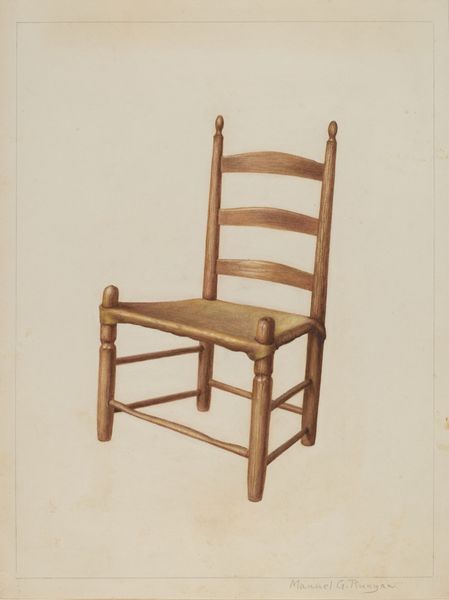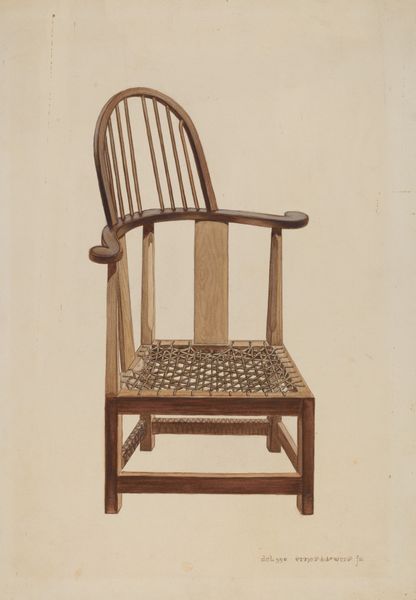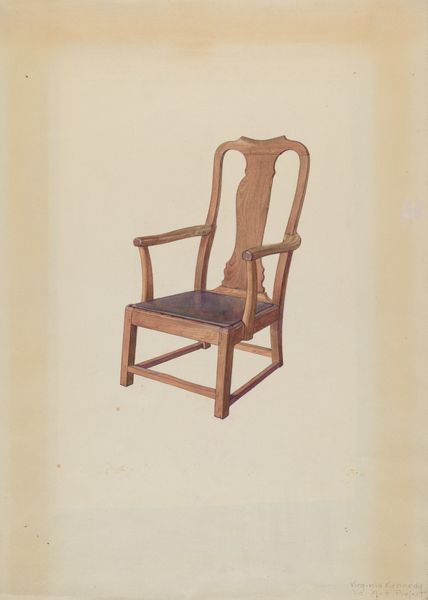
drawing, watercolor
#
drawing
#
watercolor
#
classicism
#
watercolour illustration
#
academic-art
#
watercolor
Dimensions: overall: 29 x 22.5 cm (11 7/16 x 8 7/8 in.) Original IAD Object: 36 3/4"high, 22 1/4"wide, 16 3/4"deep. Seat 17"high
Copyright: National Gallery of Art: CC0 1.0
Editor: This is Ferdinand Cartier's "Side Chair," a watercolor and drawing from 1937. It's so straightforward, almost austere, but the blue patterned cushion hints at something more luxurious. How would you interpret its function and place in art history? Curator: Considering its context, this "Side Chair" appears as an intriguing negotiation between mass production and artistic aspiration in furniture design. 1937 places it squarely within a period grappling with the social responsibilities of art. What purpose might a drawing like this serve in the late 1930s? Was it meant to democratize good design? Editor: Well, given the social climate, perhaps this drawing was trying to make good design accessible to ordinary people. The classic lines also feel familiar, and perhaps meant to counter some of the more radical and unsettling designs coming out at that time. Curator: Exactly. It subtly embodies the complex interplay between high art, industrial production, and the socio-political function of design. This chair isn't just an object; it represents aspirations and perhaps anxieties surrounding the role of art in shaping society. What statement does the artist make, by choosing such a ubiquitous object as a chair? Editor: It makes you think about how art is connected to everyday life, and about who gets access to 'good design.' The visual simplicity almost feels like a statement in itself. I hadn't considered its social and political dimensions at first. Curator: Precisely. Sometimes, the most ordinary objects tell the most compelling stories about our culture and values. Looking at it this way has shifted my understanding of its importance.
Comments
No comments
Be the first to comment and join the conversation on the ultimate creative platform.


